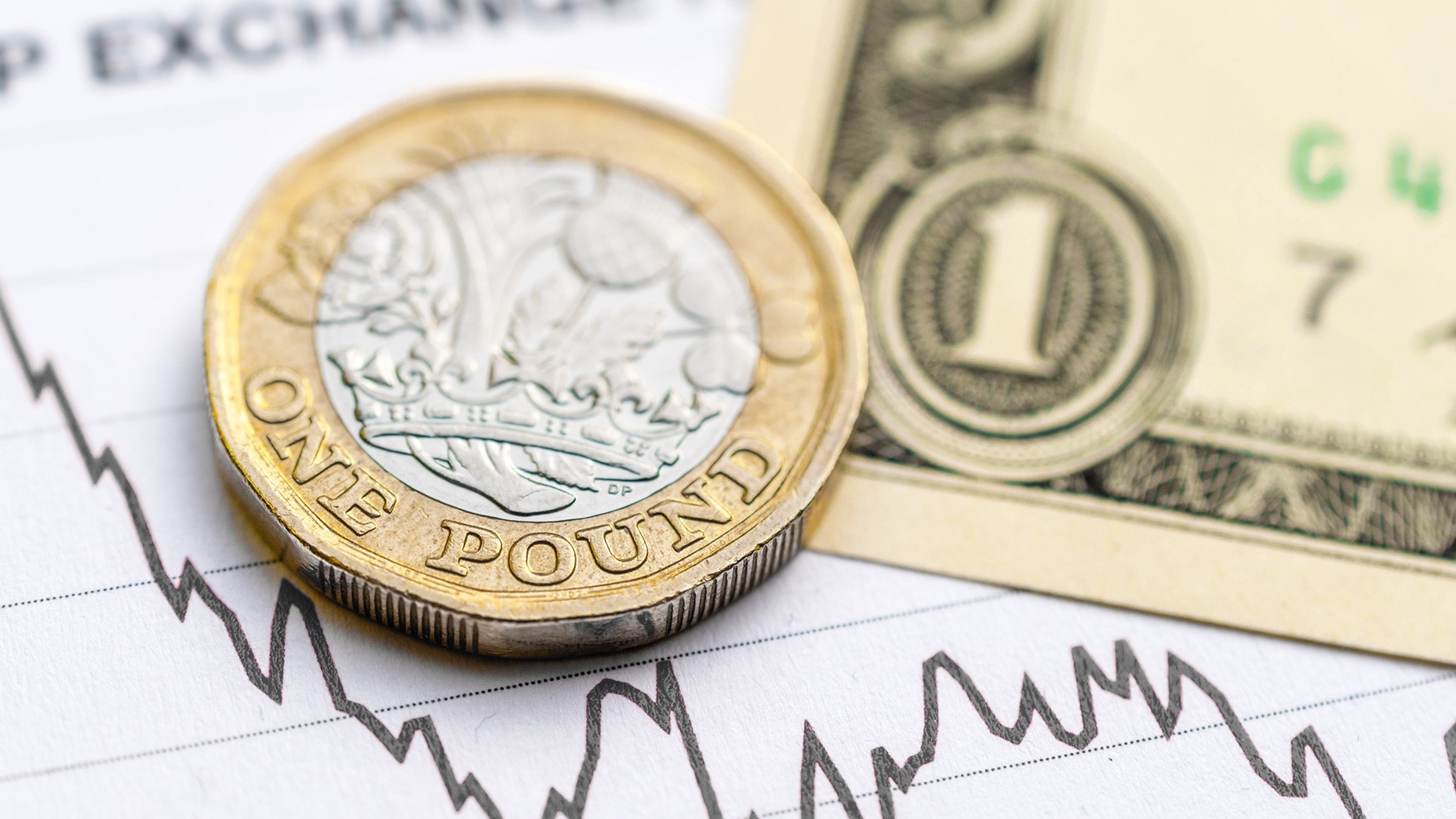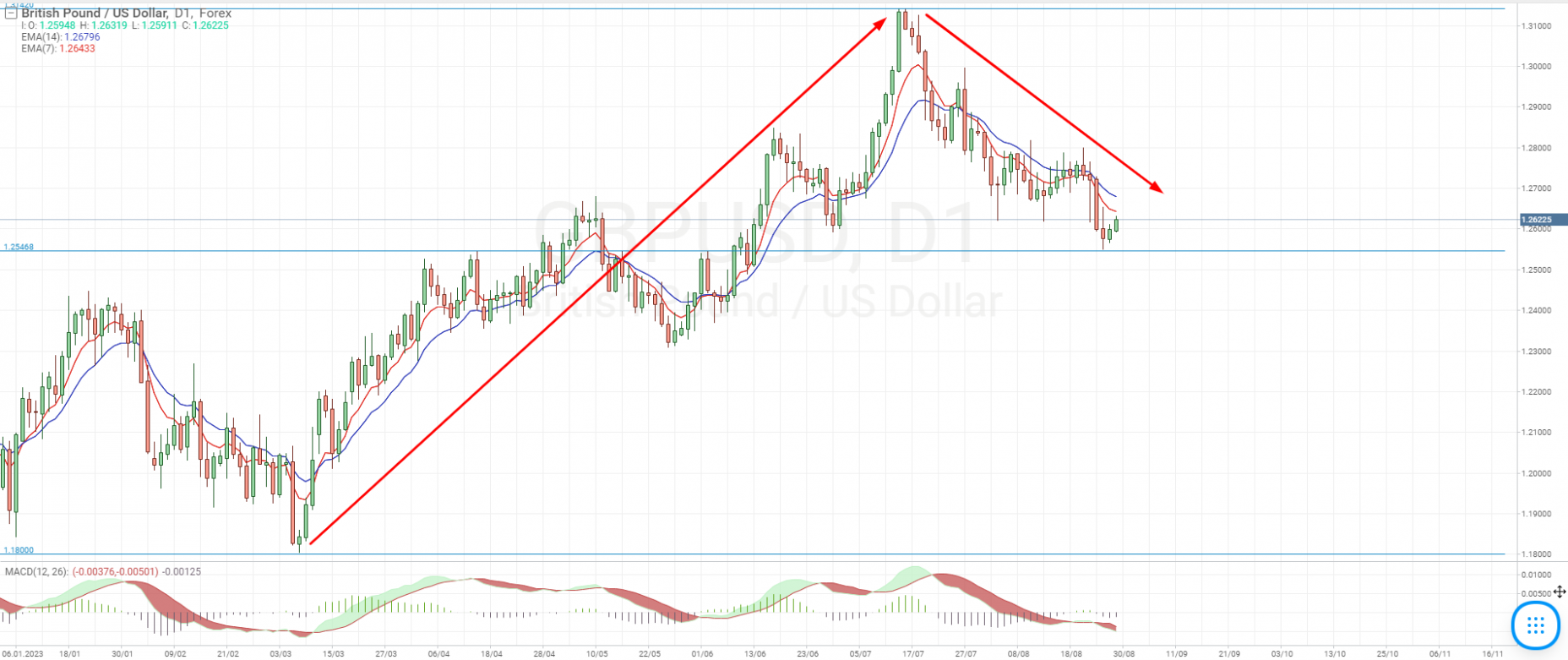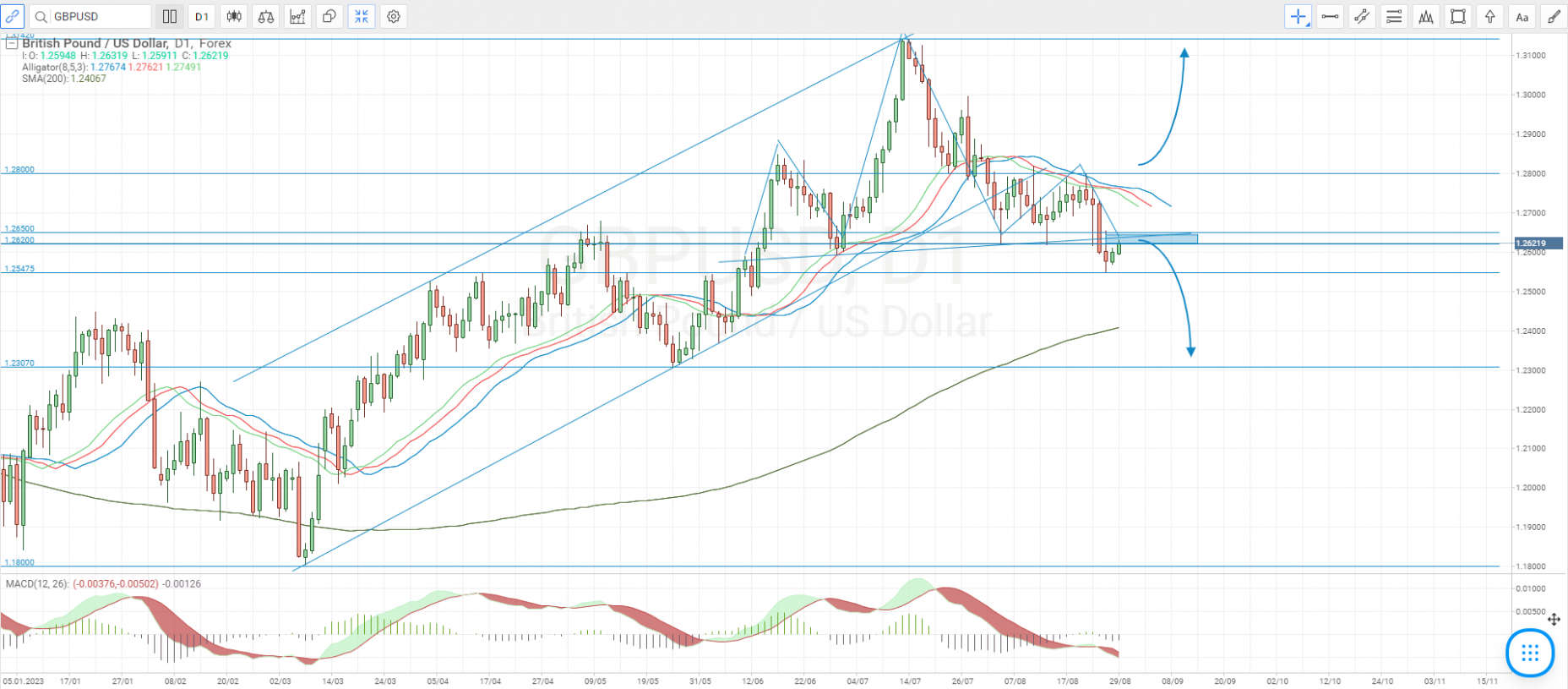GBP/USD Analysis: Will Downward Momentum Persist in Autumn 2023?

7 minutes for reading
GBP/USD (British pound versus US Dollar) experienced steady growth since the beginning of 2023, hitting an annual high of 1.3142 in July, followed by a downward reversal and a correction. Today we will examine the key factors influencing the GBP/USD pair’s trajectory under the current conditions and analyse whether the downward trend is expected to continue.
You can visit the RoboForex Market Analysis webpage for the latest GBP/USD forecasts.
Overview of the GBP/USD currency pair
GBP/USD is one of the major currency pairs and ranks among the top three most demanded and traded pairs in the foreign exchange market alongside EUR/USD and USD/JPY. The base currency is the pound sterling, and the quote currency is the US dollar.
The behaviour of the GBP/USD quotes reflects the comparative state of the current economic conditions in the US and the UK. A rise in quotes indicates the strength of the pound and the weakness of the US dollar.
Given that the pound sterling is considered one of the most aggressive currencies in the financial market, the GBP/USD pair is characterised by a high level of volatility, which attracts traders and investors.
Trading characteristics of the GBP/USD pair
- The pair is traded round the clock from Monday to Friday, with significant trading volumes during the European and American sessions, leading to major movements
- The currency pair is characterised by high average daily volatility within the range of approximately 1,000-1,300 pips. During times of market force majeure, it has the potential for strong movements exceeding 2,000 pips per day
- The spread for GBP/USD is considered minimal, thanks to its high liquidity, and typically ranges around 10 pips in a calm market
GBP/USD dynamics in 2023
This year, the GBP/USD currency pair showed a moderate upward trend, starting 2023 at the 1.2070 mark. The pair later reached its lowest value near 1.1800, followed by a rise to the annual high of 1.3142. However, this gave way to a subsequent downward correction, with the quotes currently hovering around 1.2600. At the time of writing, it can be concluded that the pound sterling has been showing growth against the US dollar from January to August inclusive.

Factors influencing the GBP/USD exchange rate
The Bank of England’s monetary policy
This is the pivotal factor influencing the valuation of the pound sterling in the global currency market. The main tool of the Bank of England, the country’s central bank, to control inflation and affect the national currency exchange rate is the decisions on interest rates. If the interest rate increases, the exchange rate appreciates, while a decrease in the interest rate leads to a decline in the exchange rate.
Since December 2021, the UK regulator has been tightening the monetary policy in an attempt to curb rapidly rising inflation. The interest rate has increased from 0.1% to 5.25% over this period. The Bank of England’s Monetary Policy Committee is focused on achieving the inflation target of 2%. In June 2023, the CPI inflation index rose by 7.9% compared to last year’s statistics.
On 2 August 2023, the central bank raised the interest rate by 0.25% to 5.25%. Inflation is far from its target level, which gives good reason for the interest rate to be hiked further. The Bank of England’s decisions in this regard provide support for the pound sterling against other currencies, including the US dollar.
However, there is a serious risk of a slowdown in the UK economy caused by significant tightening of credit terms. If the GDP begins to decrease and there are signs of emerging recession, this may have a negative impact on the pound exchange rate, with the GBP/USD pair coming under pressure.
The US Federal Reserve’s monetary policy
Just like the Bank of England, the US Federal Reserve has been actively combatting inflation by tightening monetary policies. Since 2022, the interest rate in the US has risen from 0.25% to 5.5%. This significantly affected the US dollar, which managed to strengthen considerably against many world currencies.
In July, the Fed raised the interest rate to 5.5%. Comments from Jerome Powell, the chair of the Federal Reserve, suggest that the cycle of interest rate hikes is coming to an end. Experts predict a maximum of two more hikes this year, after which the rate will remain stable for some time and possibly even decrease depending on economic conditions.
The tightening of the monetary policy exerts considerable pressure on the US economy. High inflation and slowing economic growth, along with concerns about the stability of the banking sector and the risks of US debt default, add to conditions for a potential recession. In this scenario, the US dollar might decline against the pound and other world currencies.
Economic development indicators of the US and the UK
- Inflation reports by the Bank of England and the Fed
- Unemployment Rate
- Nonfarm Payrolls
- GDP Growth Rates (GDP)
- Inflation Indices (CPI, PPI)
- Industrial Production Index
- Retail Sales
- Trade Balance
- The US Consumer Confidence Index
- The US Business Sentiment Index (ISM)
GBP/USD technical analysis
GBP/USD is showing a downward correction on the daily chart, moving below the lower boundary of the ascending daily price channel, and forming a Head and Shoulders reversal pattern. The quotes are currently below the figure baseline with a strong resistance area at 1.2620-1.2650 and a support level at 1.2547.
If the resistance at 1.2620-1.2650 is achieved and the quotes rise higher, this will open the way for growth to a daily high of 1.2800. Should the bulls hit this high too, the Head and Shoulders scenario will no longer be effective, and an uptrend could be expected to resume. In this case, the growth target will be the annual high of 1.3142.
Another scenario suggests that the GBP/USD quotes continue to decline unless they manage to break through the resistance areas at 1.2620-1.2650 and 1.2800. The key signal indicating a continuing downward movement will be a breakout of the support level at 1.2547. In this case, the Head and Shoulders reversal pattern could be completed with the quotes falling to a strong daily support level at 1.2307.

GBP/USD analytical forecasts for 2023-2024
- ING Group analysts expect the GBP/USD rate to hover around 1.3100 by the end of 2023 and rise to 1.3400 by mid-2024
- Specialists at the Economy Forecast Agency (EFA) forecast that the rate will be 1.2910 by the end of 2023 and 1.3020 by the end of 2024
- According to the Wallet Investor portal, the quotes will continue their downward movement, dropping to 1.2390 by the end of 2023 and 1.2100 by the end of 2024
Summary
The GBP/USD currency pair is experiencing moderate growth in 2023 with the daily chart showing a downward correction at the time of writing. The central banks of the UK and US are implementing tighter monetary policies to fight the escalating inflationary pressure. Interest rates currently stand at 5.25% and 5.5% respectively, with neither the pound nor the dollar gaining distinct advantages.
The key factor for the pair’s further movement will be the pace of economic growth in these countries (GDP growth rates). Interest rate hikes exert pressure on the economy, and if there are signs of emerging recession, this will affect currency quotes. Should these indications arise within the US economy, GBP/USD will gain momentum for growth. On the other hand, signals from the UK economy will drive down the currency pair’s quotes.
On 1 September, the US will release employment statistics for August, namely the nonfarm payrolls and the unemployment rate. If the data deviates significantly from the projected values, this may lead to increased market volatility and give momentum for further movement of the GBP/USD quotes.















